British Embassy, Washington, D.C.
Introduction
Text-to-speech Audio
Images
The current British chancery in D.C. is a 1950s contemporary structure that incorporates both old and new materials.
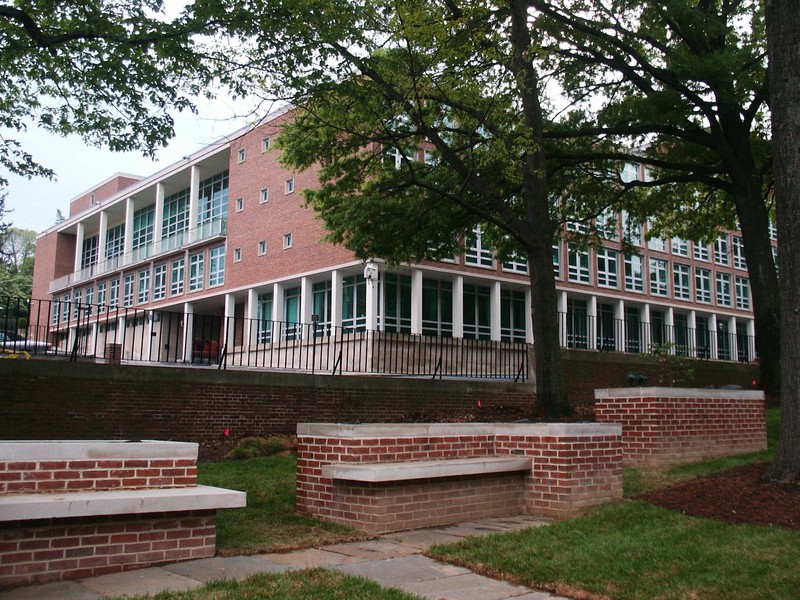
The Ambassador's Residence, built in the 1920s, is a beautiful, Queen Anne building designed by Edwin Lutyens, his only work in the United States. Photo by AgnosticPreachersKid.
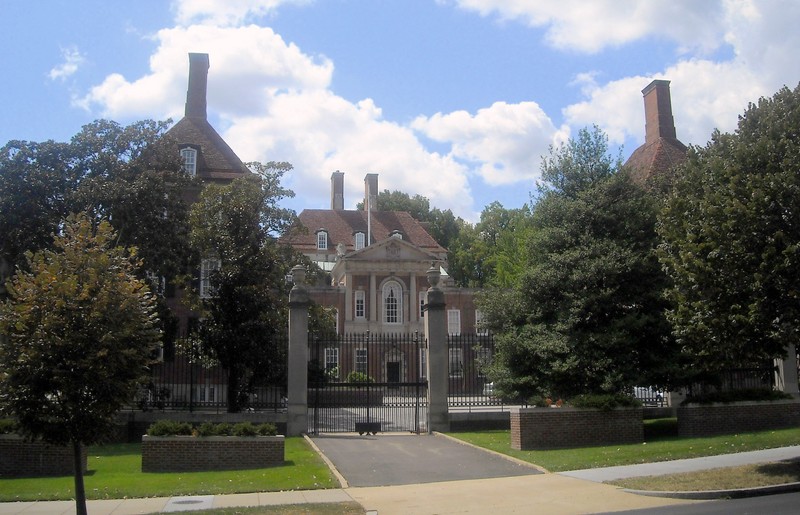
A statue of Winston Churchill on the Embassy's landscaped grounds. Photo by Carol Highsmith, Library of Congress.
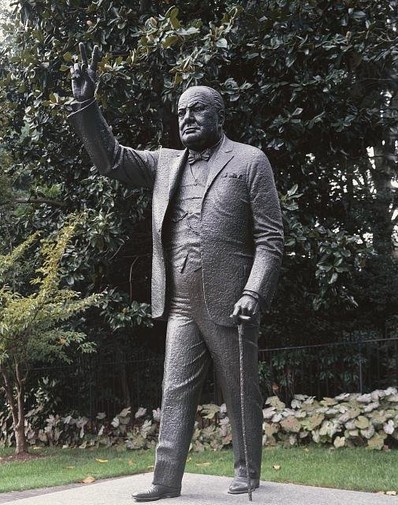
The beautiful library inside the Ambassador's Residence. Photo by Carol Highsmith, Library of Congress.
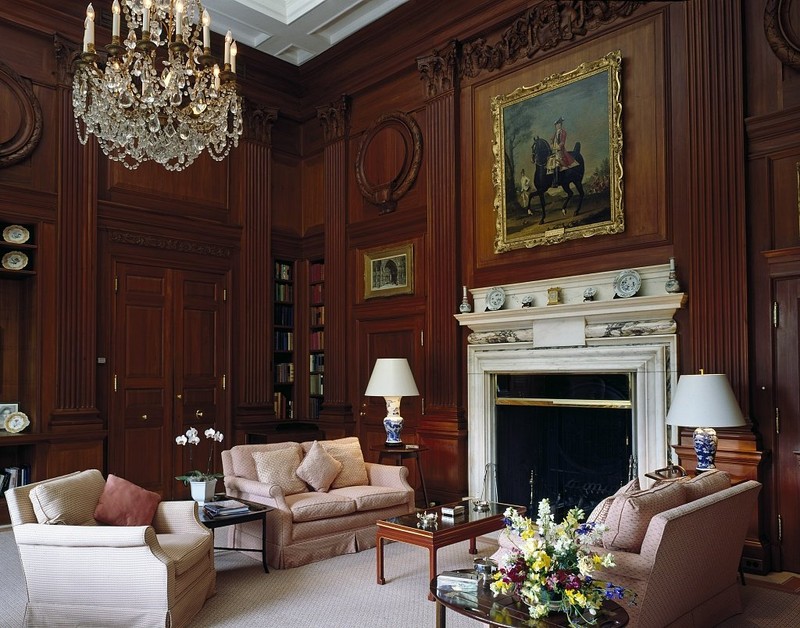
Queen Elizabeth II and the Duke of Edinburgh meet with President Gerald Ford at the British Embassy in July 1976. Photo courtesy of the White House Photographic Office.
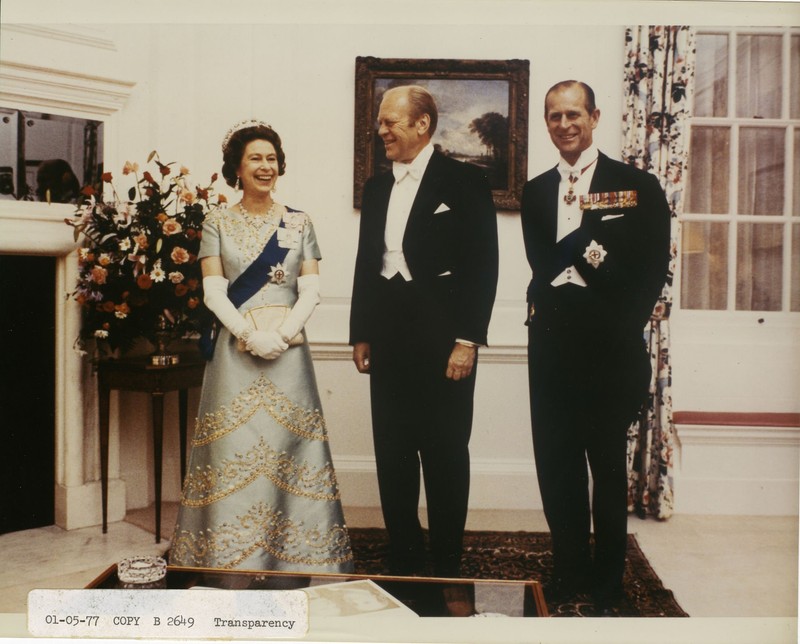
Backstory and Context
Text-to-speech Audio
The embassy maintains relations with the United States on a variety concerns relating to both countries. British diplomats are responsible for communicating British interests to the American administration and advocating trade between the two nations. The British Embassy in Washington, D.C. focuses on providing consular assistance to British nationals within the District, as well as in Delaware, Maryland, Virginia and West Virginia. Additional branches of the embassy are located in Atlanta, Boston, Chicago, Houston, Los Angeles, Miami, New York, and San Francisco.1
In 1946, Winston Churchill characterized the exceptionally close relationship between the United Kingdom and United States as a “special relationship.” The countries’ shared history and alliance have had great influence on diplomacy, politics, military actions, economics, culture, and human rights initiatives around the world. Britain and the United States formally established a diplomatic relationship on June 1, 1785, at the American Legation in London. John Adams, prior to his Presidency and Vice Presidency, served as the first ambassador to Britain. The first British representative, George Hammond, arrived in the young United States in 1791. Relations were briefly suspended during the War of 1812, in which the two countries clashed over American sovereignty, an economic blockade in France, and Native American relations. In 1814, British forces occupied Washington and burned the White House and the Capitol Building. After the war, Britain and the United States resumed their diplomatic relations and have been allies ever since. The countries have come to each other’s aid in the World Wars, the Korean War, the Persian Gulf War, Operation Iraqi Freedom, and in Afghanistan. Britain and the United States are founding members of both the United Nations and the North Atlantic Treaty Organization (NATO) following World War II.2
The British Embassy complex in D.C. helps capture the history of British-American relations, as well broader stories of Washington, D.C.’s growth. While the city of Washington was being built, diplomatic activities were based in Philadelphia, the former national capital. Once in D.C., the British legation moved ten times between 1815 and 1867, residing in places such as the Decatur House and Ringgold House. In the 1860s, the British legation decided it was more practical and cost-effective to build their own permanent residence. In 1872, the legation commissioned a large Second Empire mansion at the junction of Connecticut Avenue and N Street near Dupont Circle. As British-American relations strengthened, the British legation upgraded to an embassy in 1893. In turn, the British embassy outgrew their mansion on Connecticut Avenue by the 1920s. In 1925, the British Embassy forged a partnership with real estate developer Harry Wardman, who purchased the embassy mansion in exchange for an empty site on Massachusetts Avenue. Wardman, known turning the city’s unusually-shaped intersections into useful housing, oversaw construction of what would become an expansive complex where the Embassy resides today. English architect Sir Edwin Lutyens designed the Ambassador’s Residence, a beautiful Queen Anne mansion inspired by those found in the English countryside. By 1931, the British Embassy vacated their former home on Connecticut Avenue, which Wardman demolished the following year. In the coming decades, the British Embassy absorbed surrounding plots of land for security reasons, landscaped gardens, and new buildings to accommodate the exponential increase in staff during World War II. Additional offices spaces were leased throughout the city, further fragmenting the Embassy staff.3
By the 1950s, it was clear the British Embassy needed more space to conduct diplomacy effectively in D.C. England’s chief architect in the Ministry of Works, Eric Bedford, and his staff designed a contemporary structure that would contrast Lutyen’s grand mansion. Her Majesty Queen Elizabeth II laid foundation stone of the new chancery on October 19, 1957. The building represented a modern, innovative Britain with subtle nods to history. It incorporated the same red brick and Indiana limestone found in the Ambassador’s Residence and marble from Dorset, England. It was also the first building in the United States to install float glass windows. Invented by the British glass company, Pilkington, the float glass process created high-quality, uniform sheets of glass and revolutionized window manufacturing. For some, these materials came together and represented both past and present Britain. For others, the design was more reminiscent of a hospital or factory. Though its architectural appeal has been debated, the building is still home to the British Embassy and it has undergone renovations and upgrades over the years.4
The British Embassy on Massachusetts Avenue has witnessed almost a century of diplomacy between Britain and the United States. The complex has welcomed notable visitors, such as the King George VI and Queen Elizabeth in 1939, the first reigning British monarchs to visit the United States, Winston Churchill over the course of thirteen visits, and the Beatles in 1964, who attended a reception following their first American concert at the Washington Coliseum. It has also been a place where Britain and the United States have expressed their international friendship. After the July 7, 2005 bombings in London, the United States Army Band performed “God Save the Queen” in memory the victims at the British Embassy. This was a symbolic response to the military performance of “The Star-Spangled Banner” at Buckingham Palace after the September 11, 2001 terrorist attacks. The British Embassy hosts world leaders, works with British nationals on a daily basis, and is occasionally open to the public.5
Sources
1. British Embassy, Washington, D.C.
2. U.S. Department of State, “U.S. Relations with United Kingdom,” Bureau of European and Eurasian Affairs; U.S. Department of State. “A Guide to the United States’ History...” Office of the Historian.
3. Bertram, “Washington before 1951,” Room for Diplomacy; Blakely, “Wardman and the British Embassy,” Landscape of a Washington Place.
4. Bertram, “Washington after 1951,” Room for Diplomacy.
5. Blakely, “The Royal Garden Party,” Landscape of a Washington Place; Lewis, “Our place in Washington: the inside story of the British embassy,” The Guardian; Spitz, “The Beatles Invasion, 50 Years Ago: Tuesday, Feb. 11, 1964,” Time; Graves, “Palace breaks with tradition in musical tribute,” The Daily Telegraph.
Bertram, Mark. “Washington before 1951.” Room for Diplomacy. Accessed October 2017. https://roomfordiplomacy.com/washington-before-1951/
Bertram, Mark. “Washington after 1951.” Room for Diplomacy. Accessed October 2017. https://roomfordiplomacy.com/washington-since-1951/
Blakely, Julia. “Wardman and the British Embassy.” Landscape of a Washington Place. December 22, 2013. Accessed October 2017. https://washingtonembassygardens.wordpress.com/2013/12/22/wardman-and-the-british-embassy/
Blakely, Julia. “The Royal Garden Party.” Landscape of a Washington Place. January 9, 2014. Accessed October 2017. https://washingtonembassygardens.wordpress.com/2014/02/09/the-royal-garden-party/
British Embassy, Washington, D.C. Foreign and Commonwealth Office. Accessed October 2017. https://www.gov.uk/world/organisations/british-embassy-washington
Foster, Peter. "Window on to another world: the residence of Britain's ambassador to the US." The Daily Telegraph. May 7, 2014. Accessed October 2017. http://www.telegraph.co.uk/news/worldnews/northamerica/usa/10814735/Window-on-to-another-world-the-r...
Graves, David. “Palace breaks with tradition in musical tribute.” The Daily Telegraph. September 14, 2001. http://www.telegraph.co.uk/news/worldnews/northamerica/usa/1340465/Palace-breaks-with-tradition-in-musical-tribute.html
“History of the U.S.-UK Special Relationship.” U.S. Embassy and Consulates in the United Kingdom. Accessed October 2017.https://uk.usembassy.gov/our-relationship/policy-history/
Lewis, Paul. “Our place in
Washington: the inside story of the British embassy.” The Guardian. May 14, 2014. Accessed October 2017. https://www.theguardian.com/world/2014/may/14/our-place-in-washington-inside-story-british-embassy
Spitz, Bob. “The Beatles Invasion, 50 Years Ago: Tuesday, Feb. 11, 1964.” Time. February 11, 2015. Accessed October 2017. http://entertainment.time.com/2014/02/11/the-beatles-invasion-50-years-ago-tuesday-feb-11-1964/
U.S. Department of State. “A Guide to the United States’ History of Recognition, Diplomatic, and Consular Relations, by Country, since 1776: The United Kingdom.” Office of the Historian. Accessed October 2017 https://history.state.gov/countries/united-kingdom
U.S. Department of State. “U.S. Relations with United Kingdom.” Bureau of European and Eurasian Affairs. July 20, 2016. Accessed October 2017. https://www.state.gov/r/pa/ei/bgn/3846.htm
The World Factbook: United Kingdom. Central Intelligence Agency. Accessed April 16, 2017. https://www.cia.gov/library/publications/the-world-factbook/geos/uk.html
